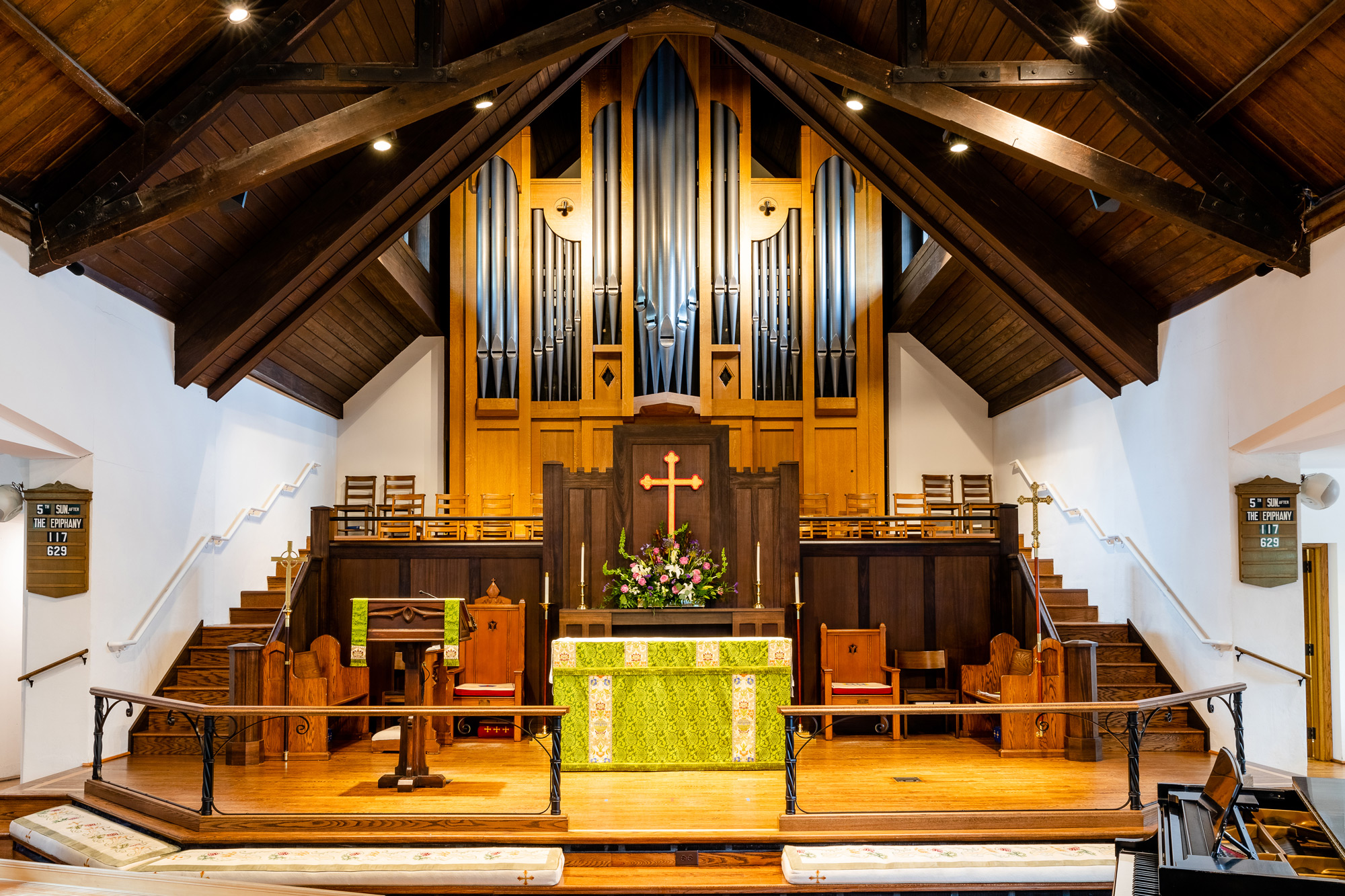Placement and Special Considerations
At Fisk, our mission is to build superb musical instruments, but also to be collaborative partners in all aspects of a project, to ensure the best and most practical musical solutions for our clients at an achievable cost.
For a time during our lengthy discussions concerning the disposition of Opus 145, church leaders had considered building a new, larger sanctuary to accommodate a growing congregation, the new organ, and an expanded role in the region’s energetic arts community. When fundraising indicated a shortfall, the initially disappointing conclusion was that the cost of a new building was simply prohibitive, and that the new organ would be in the West Gallery of the existing sanctuary, where the previous organ and choir had lived for many years. As cramped as this arrangement was in floor space and ceiling height, it seemed the only choice.
In preparation for the visual design phase of the organ, an architectural model of the sanctuary was built at our workshop. While working within the model we hit upon an unexpected solution that could provide nearly all of the benefits of a new building at a fraction of the cost. The organ and choir could move to the front of the sanctuary and inhabit a newly constructed gallery above and behind the central worship area. To accommodate the height of the organ case and to add more depth and loft to the front of the nave, two bays of the church roof would be raised. The new scheme would gain additional seating for the congregation and sufficient space with improved acoustical support for both organ and choir. A redesigned chancel area would allow for the removal of the reredos during organ recitals and would be flexible enough to accommodate the church’s many secular musical events.
We seek to create instruments of great beauty that are at home in their surroundings and seem to have always been there. Our design process traditionally begins with a precise scale model of the building where the organ will go, a tradition that proves its worth and efficacy with each project. It confirms our goal of creating not only an exceptional pipe organ but doing so in the circumstance that best supports our clients’ goals and budget.
Tonal Design
The specification evolved over a period of several years of consultation and is the result of careful research and much discussion of the musical requirements of the Episcopal liturgy, the acoustics of Emmanuel’s sanctuary, and the flexibility needed for a recital instrument. Opus 145 contains two notable “firsts” for us. Just behind the façade are the pipes of the Great plenum, including the Bourdon 16. The remaining three 8′ foundations, the Flute 4, and both reeds are housed inside an expression box in “Hinterwerk” position. This feature offers the organist considerable flexibility in leading and accompanying all aspects of the Episcopal service. Secondly, a Swell to Great Super coupler was engineered into the key action creating another tonal resource and making possible sonorities that would not otherwise be obtainable.






